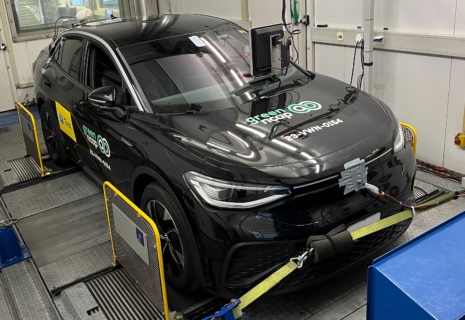VW ID.5 Pro Performance electric RWD automatic
2023
96%
10.0
10
Clean Air Index
9.4
10
Energy Efficiency Index
9.6
10
Greenhouse Gas Index
| Laboratory Tests | NMHC | NOX | NH3 | CO | PN | |
|---|---|---|---|---|---|---|
| 10.010 | Cold Test | |||||
| 10.010 | Warm Test | |||||
| 10.010 | Highway | |||||
| 10.010 | Cold Ambient Test | |||||
| Road Test | ||||||
| 10.010 | On-Road Drive | |||||
| 5.05 | On-Road Short Trip | |||||
| 8.08 | On-Road Heavy Load | |||||
| 5.05 | On-Road Light Load | |||||
| 2.02 | Congestion | |||||
| Laboratory Tests | Energy | |||
|---|---|---|---|---|
| 10.010 | Cold Test | 16.1kWh100 km | ||
| 10.010 | Warm Test | 16.3kWh100 km | ||
| 9.810 | Highway | 21.6kWh100 km | ||
| 8.110 | Cold Ambient Test | 33.4kWh100 km | ||
| Consumption | Driving Range | |||
| Average | 18.0kWh100 km | 476km | ||
| Worst-Case | 33.4kWh100 km | 252km | ||
| Greenhouse Gases | CO2 | N2O | CH4 | |
|---|---|---|---|---|
| 10.010 | Cold Test | |||
| 10.010 | Warm Test | |||
| 10.010 | Highway | |||
| 8.510 | Cold Ambient Test |
Specifications
- Tested Car WVGZZZE2ZNP50XXXX
- Publication Date 06 2023
- Vehicle Class Small SUV
- Emissions Class Euro 6 AX
- Tyres 235/55 255/50 R19
- Mass 2,138 kg
- System Power/Torque 150 kW/310 Nm
- Declared Battery Capacity 77.0 kWh
- Declared Driving Range Overall 501 km City 667 km
- Declared Consumption 17.5 kWh/100 km
- Heating Concept PTC + Heat pump




























































































































































Our verdict
Tested here is the Volkswagen ID.5 Pro Performance with 150 kW and 77 kWh battery. Even though the car weighs more than 2,100 kg due to its big battery, the demonstrated efficiency performance is impressive. The recorded consumption values are among the lowest measured by Green NCAP so far. The energy demand in the -7°C Cold Ambient Test is high, but this is the price of comfortable in-cabin heating and battery management strategies despite the presence of both a PTC heater and a heat pump. The large battery enables the vehicle to drive a little more than 500 km according to the WLTP+ procedure. With the high consumption measured in Green NCAP's Cold Ambient Test, a range of 250 km can be covered starting with a full battery, but around 480 km can be expected under moderate ambient conditions in a real-world drive. The usable battery capacity measured by Green NCAP matches exactly the officially declared value of 77 kWh. When charging with 11 kW, the overall efficiency from the grid to the output side of the battery is an impressive 91.1%. The VW ID.5 presents a lot of the progress electric vehicles are making nowadays and easily reaches an Average Score of 96% and 5 Green stars.